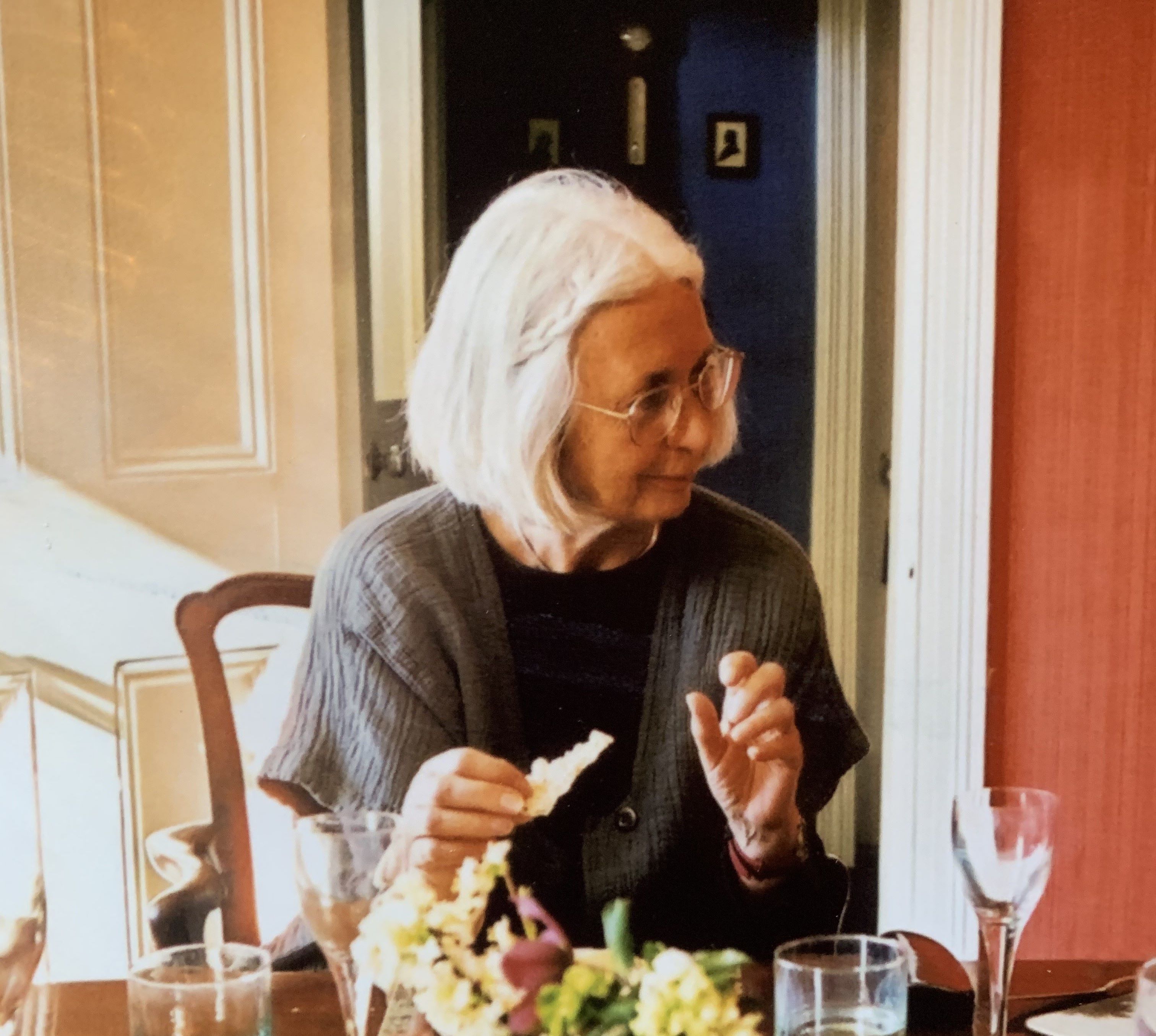

Sworders are pleased to present a selection of antique and vintage textiles in our December Fine Interiors sale, including items from the collection of the late Hildegard Heygate.
4 December 2023
VIEW AUCTION REQUEST A VALUATION CONTACT A SPECIALIST
Born in 1936 in Duisburg, Germany, Hildegard came to England in the 1950s on the Erasmus programme where she studied Chemistry at the University of Cambridge. Here she met her husband, George, and after university worked as a research assistant for ancient woodland expert and historian Oliver Rackham, by whom she was acknowledged in many of his books.

Hildegard’s introduction to the world of antique textiles, however, came through George’s mother, Gwyneth Lloyd. A well-connected RADA-trained actress, Gwyneth had built up a strong reputation as a antique textiles dealer and expert in the last two decades of her life, and from the late 1960s, Hildegard would help with the business by running stalls at various fairs and working in her Belgravia shop.
In the early 1970s, Hildegard and George moved to Suffolk and had twin girls, and from the late 1980s, she utilised her expertise built up with Gwyneth by working as the lead conservator for Joss Graham Oriental Textiles. Specialising in traditional textiles and costume from India, Central and South Asia, Tibet, North and West Africa, Joss bought textiles from street markets and bazaars and would send them back to Hildegard in batches, who would begin researching, cleaning, and restoring them ready for sale; her training in chemistry and understanding of enzymes would prove useful for cleaning delicate fabrics.
A large embroidered and crewelwork wall hanging (£400-600)
Throughout her life, Hildegard also pursued her passion for textiles by travelling herself, to Kyrgyzstan, Uzbekistan, Turkey, and once to India with her friend Roderick ‘Roddy’ Taylor, the highly respected historian and author of ‘Ottoman Embroidery’ and ‘Embroidery of the Greek Islands’. She eagerly shared her experiences with friends and family, after one trip to Iran, she hosted an Iranian-inspired lunch with her collected textiles laid out on the lawn to admire, and on more than one occasion, she called her daughters from Heathrow Airport, asking for a bit of assistance getting her new rugs across London and on to the train back to Suffolk.
A silk ikat panel, Uzbekistan (£300-500)
Included in the group of textiles being offered in Fine Interiors are two kente cloths, made in typical form with thin coloured strips woven from a cotton blend, sewn together and interspersed with blocks embroidered with patterns and shapes. This type of cloth, whose name means ‘basket’ after its woven structure, has arguably become Africa’s most well-known textile export. It is historically associated with the Asante Empire, a political state begun in the late 17th century, but its origins go back as early as 1000 B.C., among the Akan and Ewe peoples of Western African in modern-day Ghana and Togo.
An Ewe kente cloth (£400-600)
A large Asante cotton kente cloth (£400-600)
Originally only worn by kings, queens and important state figures, today, kente cloth has become a recognisable symbol of national pride in and outside of Ghana. It is not an everyday garment, but worn with pride and respect at important occasions and celebrations, for example, many black American college students wear kente stoles to receive their diplomas, along with many others across the West African diaspora to demonstrate solidarity with their culture and heritage.
An Ewe kente cloth (£400-600)
As the story of kente cloth shows, almost every culture in the world has its own textile tradition that has come to symbolise a profoundly complex social and political history, taking the value in these pieces of fabric far beyond their aesthetic qualities. There are many other pieces in the varied collection that hold similarly profound meaning, from Asafo flags by the Fante people of West Africa, to Uzbek silk embroidered suzanis. Eager to make the most of this collection, Hildegard opened the doors to her Wickham Market house in her later years, sharing her knowledge of textiles and restoration techniques to local community groups, where they would communally learn about textiles and use pieces in her wonderful collection as reference points.
Part II of the collection, including Indian, Central Asian and Japanese textiles amongst others, will be offered in Homes & Interiors on 9 January 2024. For further information contact: fineinteriors@sworder.co.uk

fineinteriors@sworder.co.uk | 01279 817778
In our next Design sale on Tuesday 22 October, we are lucky to offer a plethora of cameo works from many of the French greats, as well as a fine collection of contemporary Lalique works.
1 October 2024
A remarkable European private collection is set to come up for auction at Sworders later this year, offering an eclectic mix of antiquities and modern art that reflects the sophisticated taste of its owner.
20 September 2024
Featured in our next two Homes & Interiors sales (18-19 September and 8 October) are pieces from an exceptional private collection of Georgian shoe buckles. Inherited from the vendor’s parents (some even from their grandparents) they were acquired over a prolonged period since the 1950s.
13 September 2024